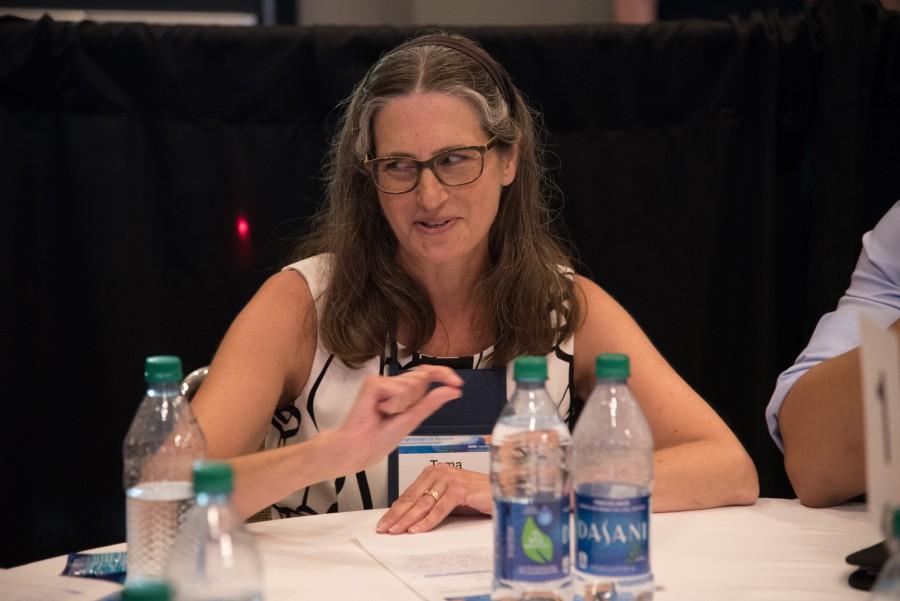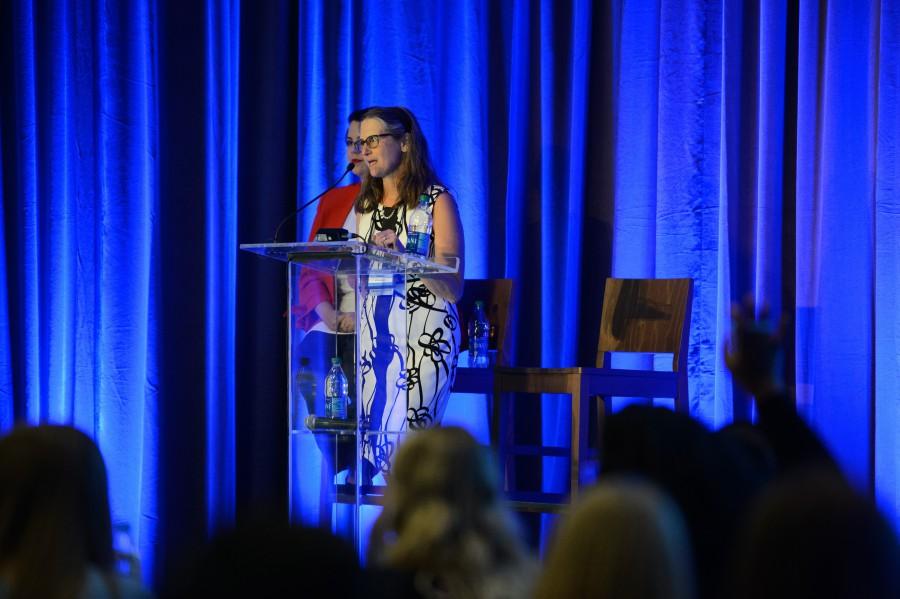The Write Stuff: 3 Expert Tips from Tama Hasson on Academic Science Writing
Dr. Tama Hasson starts off her New Year grilling would-be science writing skills tutors. From January to June, she interviews and evaluates senior graduate students to see if they have the “write stuff” to shepherd Amgen Scholars through the science writing process at UCLA.
The tutors become partners in a summer-long process to train the scholars in writing an academic paper, from proposal to abstract to full paper. It’s a rigorous process that starts even before the scholars arrive to the UCLA campus with an assigned reading list. Week 1 of the program, the students must then produce a proposal based on the reading list. The goal is to prepare Amgen Scholars directly for writing and publishing their research in scientific journals.
Amgen Scholars are prolific publishers. Looking at just the statistics for UCLA the past year, Hasson counts at least 18 new Amgen Scholars papers. She credits that success in no small part to their science writing training program.
After many years of hiring and training the writing skills tutors and seeing the students’ final papers, as well as being a published Ph.D. scientist herself, Hasson has a wealth of insights into what makes for strong academic science writing. We spoke with her, to get her top 3 tips for our alumni as they work to publish their research.
Know your audience
“You are not writing the paper for you, you are writing the paper for your reader,” Hasson says. Oftentimes, she explains, early career researchers forget that their paper has to be self-explanatory to others.
She likens reading some papers to reading a murder mystery, where you are not sure what is happening moment to moment, but you feel sure you’ll be filled in later. But an academic paper should not read like a mystery; it should read like a story with a natural beginning, middle, and end, where each piece of information shared has significance and logically leads to the next question. “A paper should move forward like a partnership between the writer and reader,” she says.
Also important to knowing your audience is understanding the conventions of the specific research discipline the paper fits within. As throughout the Amgen Scholars Program, Hasson works with students in many disciplines that have different conventions for writing papers. “A chemistry paper is very different than a cell biology paper,” she explains.
Hasson advises that students check with their mentors on the right format for their field. At UCLA, the writing skills tutors encourage conversations early and often between the students and mentors on the specific paper format, especially for references. “Anything the student does should be the discipline norm,” Hasson says.
Remember the big picture
One of the biggest tests in vetting the writing skills tutors for UCLA is how they approach a sample abstract they are asked to edit. Only 60% of candidates pass this test. Hint: If they just fix the typos, they are not going to make the cut.
The key, Hasson says, is understanding the correct structure for an abstract. The sample abstract she provides for the test represents a common error for early academic science writers: forgetting the big picture. “New writers often forget to tell you what the question is their research is addressing,” she says. “For example, they just hone in on the gene of interest.”
What Hasson likes to see in the writing skills tutor testing is an understanding of how an abstract should be organized and a willingness to rearrange it. The abstract should start with the big picture and then narrow in on the specific question and the approach being taken to address it. This helps set up the paper as an engaging story. “No one is going to want to read your paper if abstract isn’t interesting,” Hasson says.
The same lesson holds true for a full paper. An introduction, for example, should start broad with the big picture and get narrower; for a paper about targeting a gene for cancer, that would mean starting by discussing a particular cancer and a gene, moving to what researchers know about how a gene signaling pathway leads to cell growth, and then on to the goal of creating a new drug based on that pathway.
Welcome feedback and revisions
Writing is a creative process and necessarily involves a lot of destruction and reconstruction along the way. Anyone who has published a scientific paper knows that it goes through many rounds of reviews, from collaborators to peer-review to professional editors. Before working with students, Hasson ensures that the writing skills tutors are prepared for the laborious revision process to come.
“Our tutors need to be used to the idea that in writing, you should welcome feedback,” she says. The tutors review and provide feedback to each part of the scholars’ papers, starting with the proposals. The beauty of the process, she says, is seeing the papers evolve from multiple revisions and sets of commentary.
By no means are these tips all Hasson has to say about best practices for writing scientific papers. Other common mistakes she sees include:
- Getting caught up in the method in excruciating detail
- Not paying attention to word limits
- Not defining abbreviations
- Making every panel a figure, rather than putting together individual figures side-by-side for descriptive panels
- Forgetting to include statistical analysis in the methods
The list could go on and on, and writing is something that will improve based on experience throughout your career. But to start, focus on the big picture and nailing the structure for your audience. And, of course, be open and willing to change your approach based on constructive feedback. That’s the write stuff you’ll need to take your papers to the next level!



